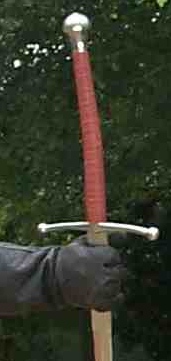
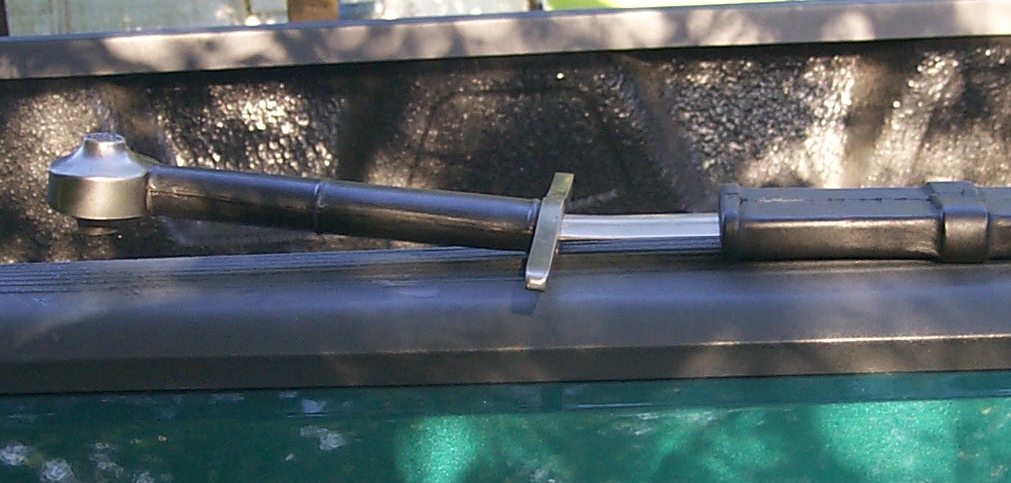
 |
 |
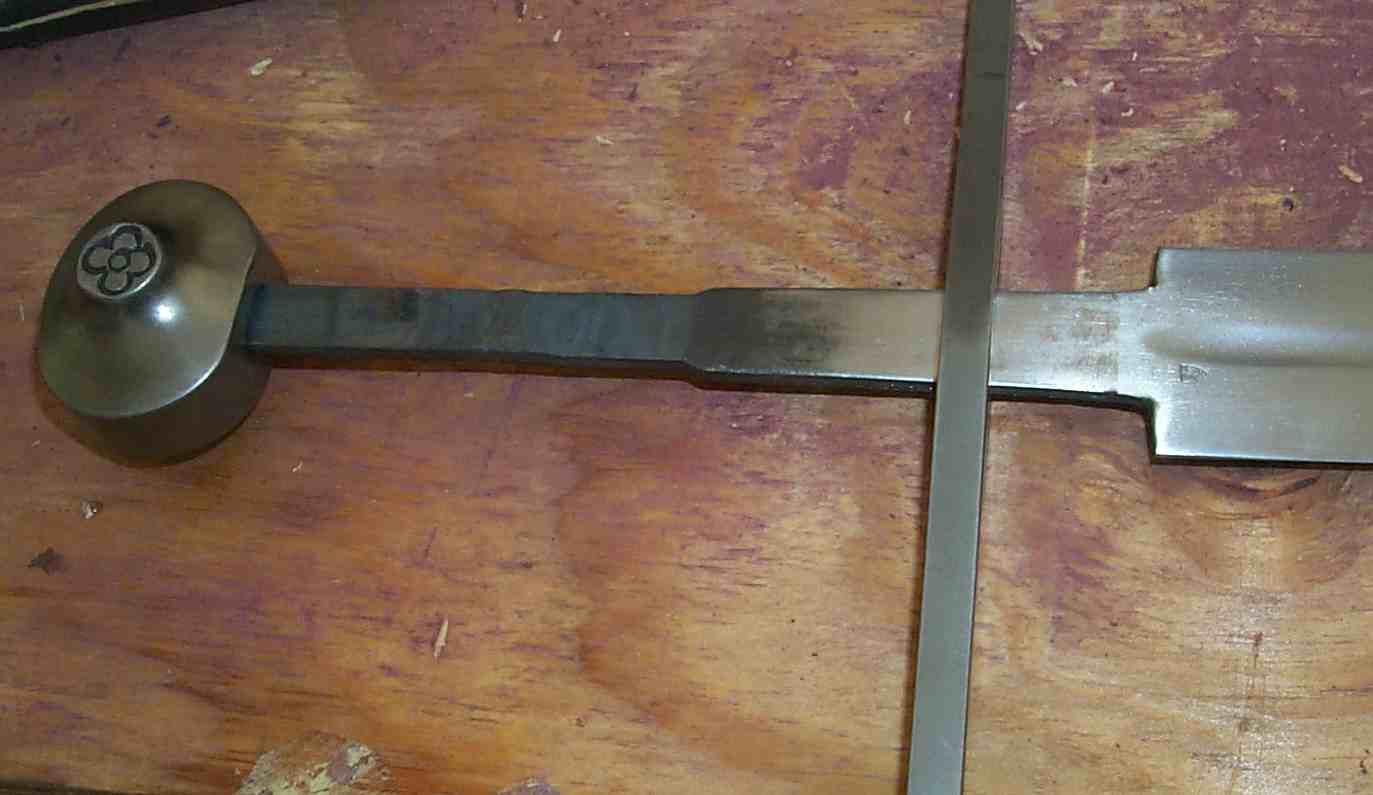 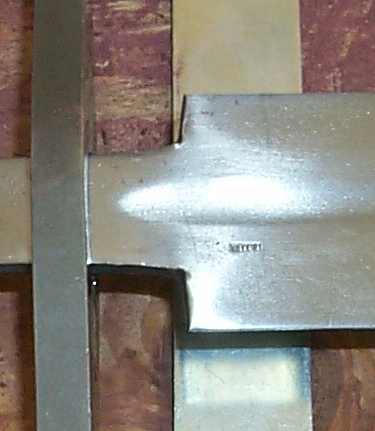 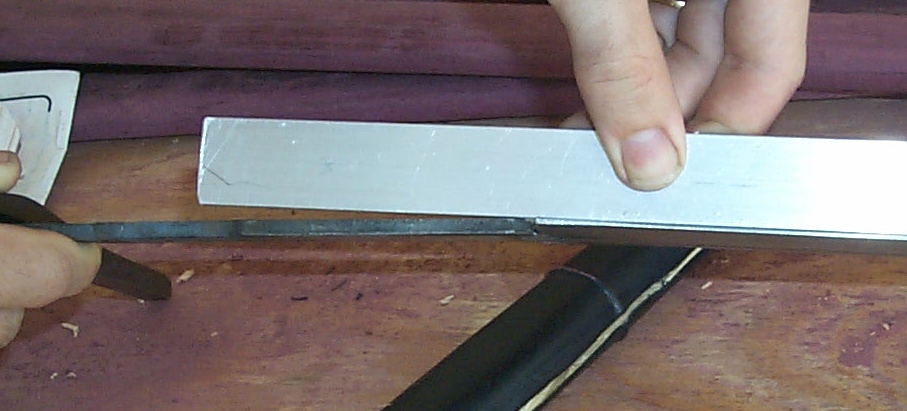 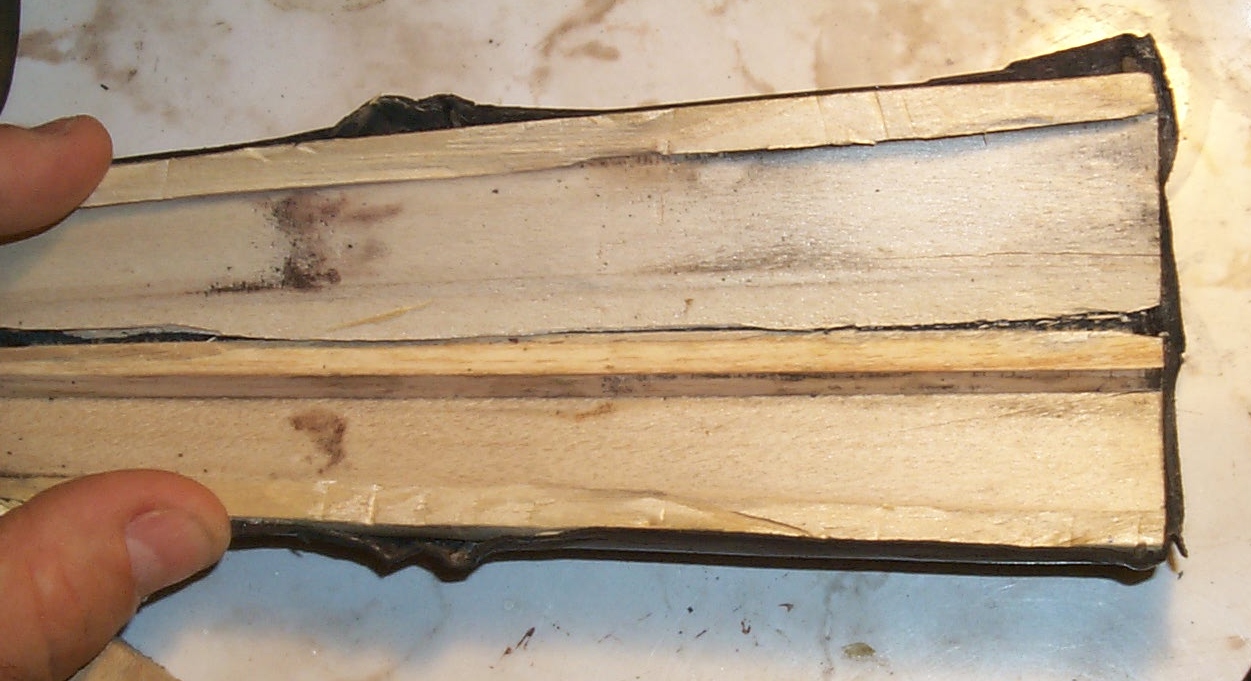 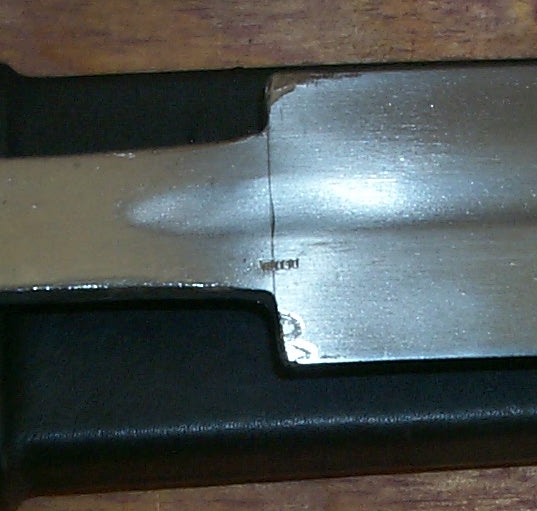 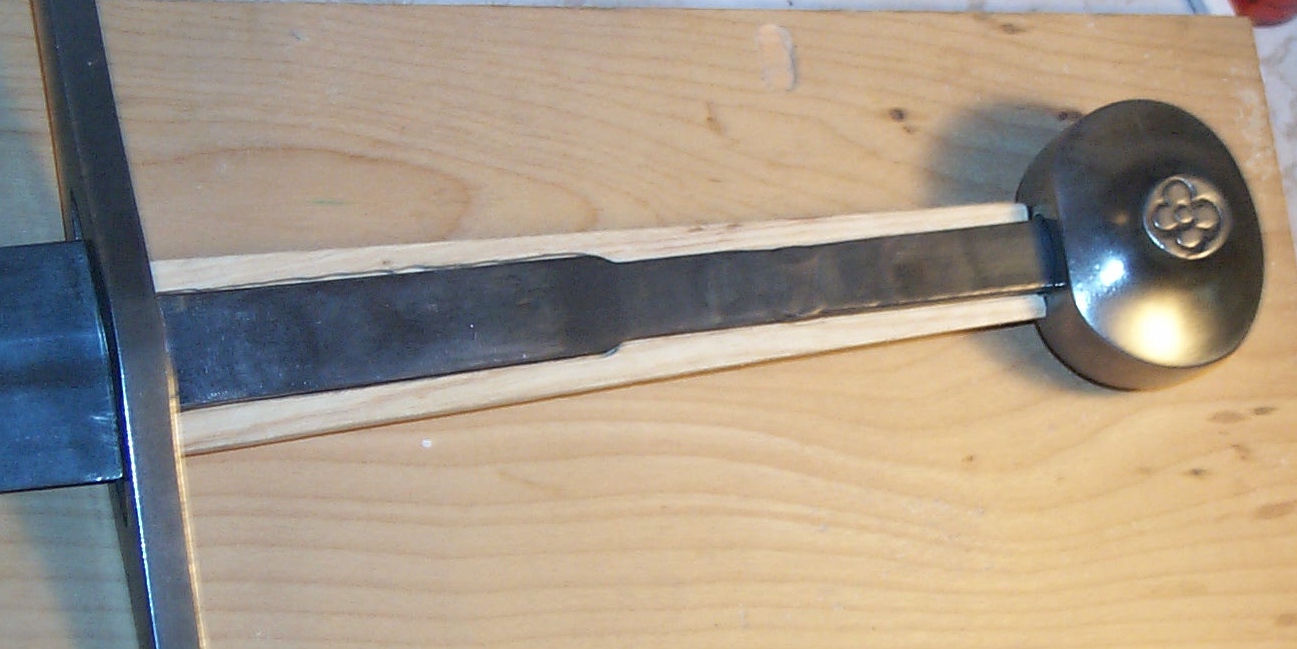 |
It appears to be the season for bent swords. The following discussion represents my recent contribution to the The HACA Forum. I am not an expert swordsman but I enjoy the art. In particular several models of Del Tin have been bent in the tang and have been repaired with various procedures. The first lesson learned in this experience is to avoid striking anything substantially hard. If you want to use a machete or an axe do so, but leave the hard stuff alone if you have a sword in your hand. This includes items such as phone books and other soft targets setting on hard posts. Sooner or later the target is sliced through to expose the blade to the hard place below ! There are several more important issues to respect such as 1) sharpened swords can not be returned, 2) blunts work pretty well for cutting, 3) some swords are really wall hangers, 4) many steels can be bent without breaking, 5) cracks will propagate at the wrong time so swing with safety. I know of several DT 2158s with the nice long two handed grip that have failed easily by the tang bending in the middle of the length of the grip. This is not really a surprise when you consider the spread of the hands and the moment arm they create when the blade impacts the target. A bent sword is likely due to a combination of poor judgment and poor construction. Poor judgment is corrected by experience. Poor construction is corrected by rebuilding your sword. The Del Tins are a good example of poor grip installation because the wooden handle is not snug on the metal tang. This leads to some loss of control in the swing, strike, and follow through. And it is annoying to hear creaks and feel wobbles during fast movements. I have two Del Tins (model 2142 and 5154) which were selected for different applications early in my sword education not too long ago. I love the big 5154 for the feel of the mass and momentum. It has a nice thin and wide but non-sharp blade. Cuts stuff with ease and is a good workout piece to practice with. But it is a bit creaky and I avoid the hard stuff because I do not have time to repair it. It looks good on the wall too. My hand and half 2142 was another problem because I purchased it sharpened and I did not know what could go wrong. I found a piece of wood log that was not as rotten as it appeared, but more hard than I realized, and tried to split it finding a knot inside. The impact caused a side loading perhaps because the cut was not perfectly vertical (no photo replay), or the bottom surface of the log tilted. Result was a sword bent out-of-plane at the guard. With fellow HACA friend Christian Darce' at hand, we took it apart, leaving the pommel on, and saw what was inside the soft wooden handle, and how the guard was fitted to the blade. The grip has a channel machined into it which does not match the shape of the tang. By being a bit oversized, my abuse only worsened the fit by smashing the wood a small amount each time it forcefully struck objects. By continuing to loosen, my control of the blade through this sloppy interface allowed the side load to happen with out me being able to prevent it, and it bent where the smaller cross sectional area of the tang began. After carefully examining the blade and tang for cracking, we placed the tang in a vice between two boards and flattened it. Then I carefully ground the pounded corners of the blade down to better fit the tapered hole in the guard. This lengthened the tang about 1/4" and allowed a rounded transition filet between the blade and tang. All edges were smoothed to reduce crack initiation locations. Next, we used the original grip as a pattern for a new one made of hickory (maybe it was ash), and shaped it roughly on a table top router. Next we sliced it in half with a band saw and cut it to length so that it was a bit longer than the tang. Each half was held against the tang and the outline traced. A router bit was adjusted for depth and a new channel roughed into each half. I used a hand dremel to complete the shaping of the channel for a tight fit on the tang length wise and around the cross section. I cleaned the two halves and applied epoxy to both faces and clamped them together onto the tang, carefully wiping excess off. A final shaping was done with a file and sanding smoothed it. Liquid metal was applied to the guard hole to fill the gaps between the guard, tang, and end of the blade. This has worked very well for me, and the sword handles sweetly. However, It has bent slightly on several occasions. The first bending was compliments of John Clements performing one of his dynamic air cutting drills with many slices and cuts to an absent opponent. The momentum alone caused a slight out of plane bend. He fixed it by simply laying the sword on the hard floor, and by applying light foot pressure to both sides restored it to reasonable trueness. I have used this method several times since, and it is quick and easy. I am careful when cutting now and avoid the hard contact. However, it bent again at recent test cut with a fellow HACA member stiking a meat cut suspended in air. No problem, because I fixed it. Tang Bending There are two bending modes the sword experiences: in-plane and out-of-plane defined by the blade cross section, and then by the tang cross section. The out of plane bending stiffness of the tang is important because 1) movement can bend it, 2) setting aside forcefully with the flat can bend it, 3) contact with blade at an angle to line of contact can bend it. This is not simply a function of crappy tang/hilt fabrication, but is related to the tempering in the guard region of the blade. Some manufacturers prefer to soften this area so the blade does not break. On the other hand a brittle material cross section has no second chance. All of the resistance to the out of plane force is carried by the reduced cross section of the tang which is basically weaker than the blade when bent this way and not fully supported by the handle. When bent too much at this position the elastic limit is exceeded and plastic deformation results and the blade stays bent. It was actually bent more than what remains because when the Yield (Elastic Limit) is exceeded and the load is released, the blade relaxes elastically, not the full deflection it was exposed to. You know what I mean? It never comes back like it was. When the hilt handle does not fully support the tang in either plane the tang must carry the load by itself and contacts the wood in perhaps two places. By stiffening the hilt, I have focused on the out of plane bending resistance at the guard point where tempering and hardness rules the response. By bending the blade back and forth in both out-of plane directions, we mechanically work harden the metal where it needs it and essentially increase the elastic resistance when bent that way. 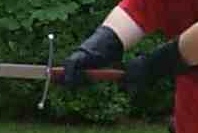 The problem with the other long hilt, long dual tang DTs is the length , and two long cross sections for the tang in the plane of the blade. POC for contact work. See photo for typical grip, and imagine how it bent in the middle. Axes are held this way, and one of the nice features of this sword is the ease of handling in this manner. Unfortunately, the DT 2158 just is not strong enough for contact with intent.
The problem with the other long hilt, long dual tang DTs is the length , and two long cross sections for the tang in the plane of the blade. POC for contact work. See photo for typical grip, and imagine how it bent in the middle. Axes are held this way, and one of the nice features of this sword is the ease of handling in this manner. Unfortunately, the DT 2158 just is not strong enough for contact with intent. Blade Bending I doubt that we have lemons when a bent blade happens. By this I mean the blade/tang transition and not just a bend in the middle of the length. The problem is usually in the design and fabrication. Perhaps we use them with more intent because we treat them like Purpleheart wasters and really smack things harder as we set aside using the flat rather than the edge. I have described two different failure modes: in-plane and out-of-plane bending. Softened tangs and transitions apply to both. Stress concentrations at corners should be of concern for cracking during in-plane bending, but this does not really influence the overall bending resistance. Thicker and wider cross sections of the blade and tang will significantly improve bending stiffness in both directions. Rapid changes in cross section will become hinges and that's why tapered or large rounded transitions are useful. I have seen many demonstrations of blade flex which may not represent how the blade really works. When used, the blade is not really in a pure bending load, but rather it is bent from a specific load creating a shear force and a bending moment transferred to the hands. Although bending a MRL blade over Hank's head does demonstrate the flexibility and temper, it's not quite the same as the reaction from forceful contact. (Hank, you might want to put your best padded helm on...) Motion and Contact My personal observation from test cutting is that side loading of the blade happens when it strikes like a bat instead of a clean blade slice. This is a function of how true the plane of the swing is. A good clean slice cuts thru with a straight line. Take a large plastic jug, or a small plastic bottle and fill it with water. Set it on a post, placing a phone book under it in case you hit the post. Cut at it diagonally. When the swing has a sideways component the target is batted off the stand. When the swing is clean the bottle is sliced in two. I would do this with large bamboo if it were handy. Although some may disagree, I like to cut at large sheets of cardboard. The path of the blade for a large part of the swing is shown in the cut. You want to see a straight line and not a curve or "J" shape. Do this observation but also do this with feet movement and multiple back to back cuts. Try tip slices, and cleaving cuts at the blade sweet spot. This has helped me to devlop proper contact, follow thru angle, and control. A similar scene is shown in the diagonal lines on sheets hung on the wall in the old fencing schools fight books. Test Cutting provides plenty of learning opportunity about blade placement, motion, and control. Be sure to critique your results. Be careful and be prepared. Have a good first aid kit nearby. Closure We have focused recently here on some popular Del Tin models. Are there any others that have been in trouble? I like the idea on an online poll or survey that compiles our collective experience in an unbiased manner. You can download an Adobe PDF version of this essay and captioned photos by clicking here . Thanks for your discussions, please send your comments and photos of your bent blade and I'll put them in the rogue's gallery. Richard Boswell |
 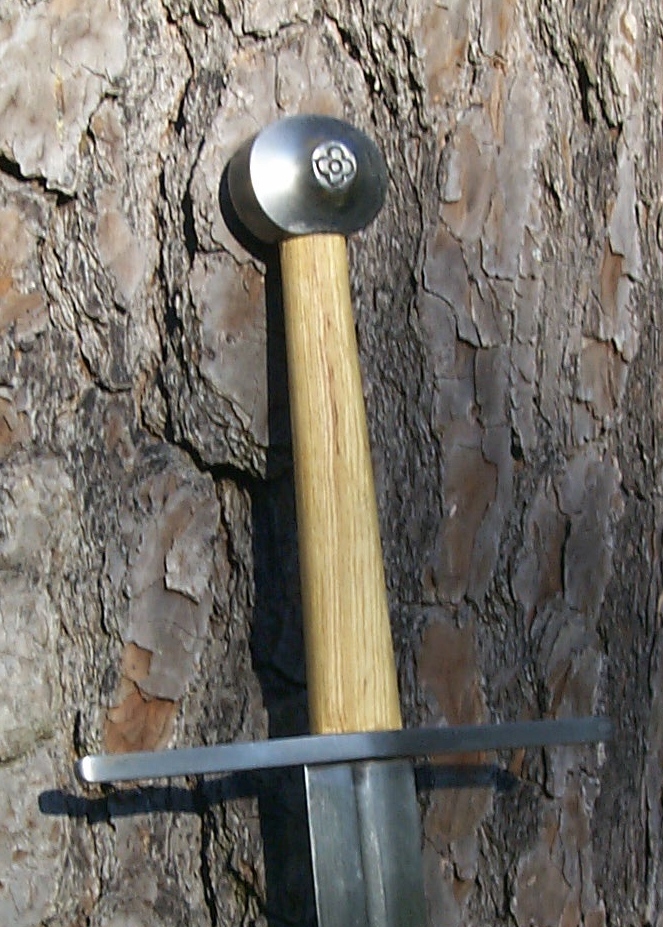 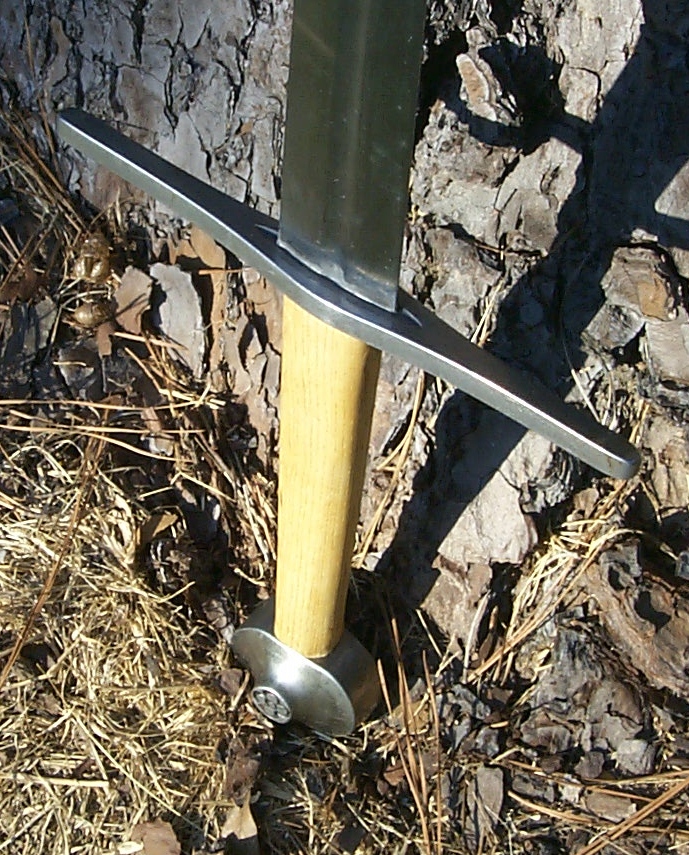 |